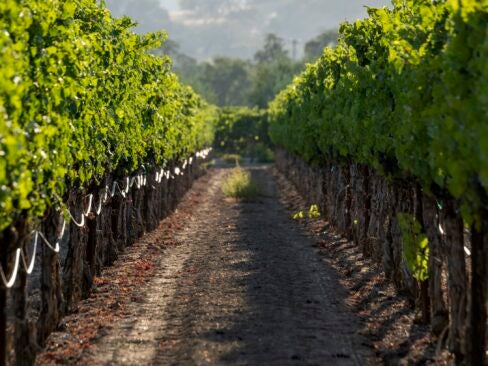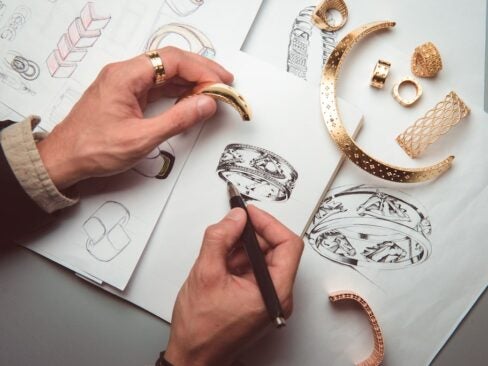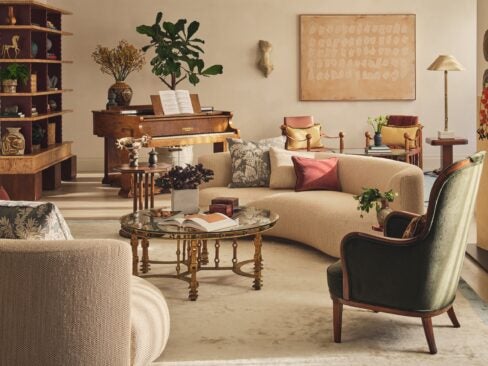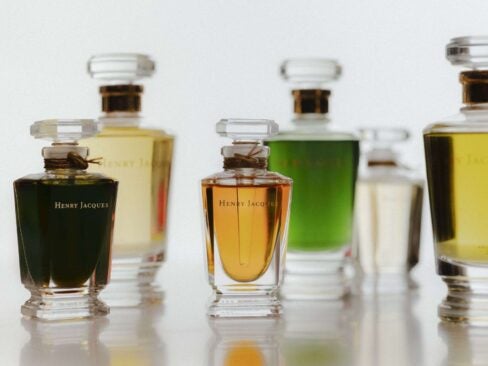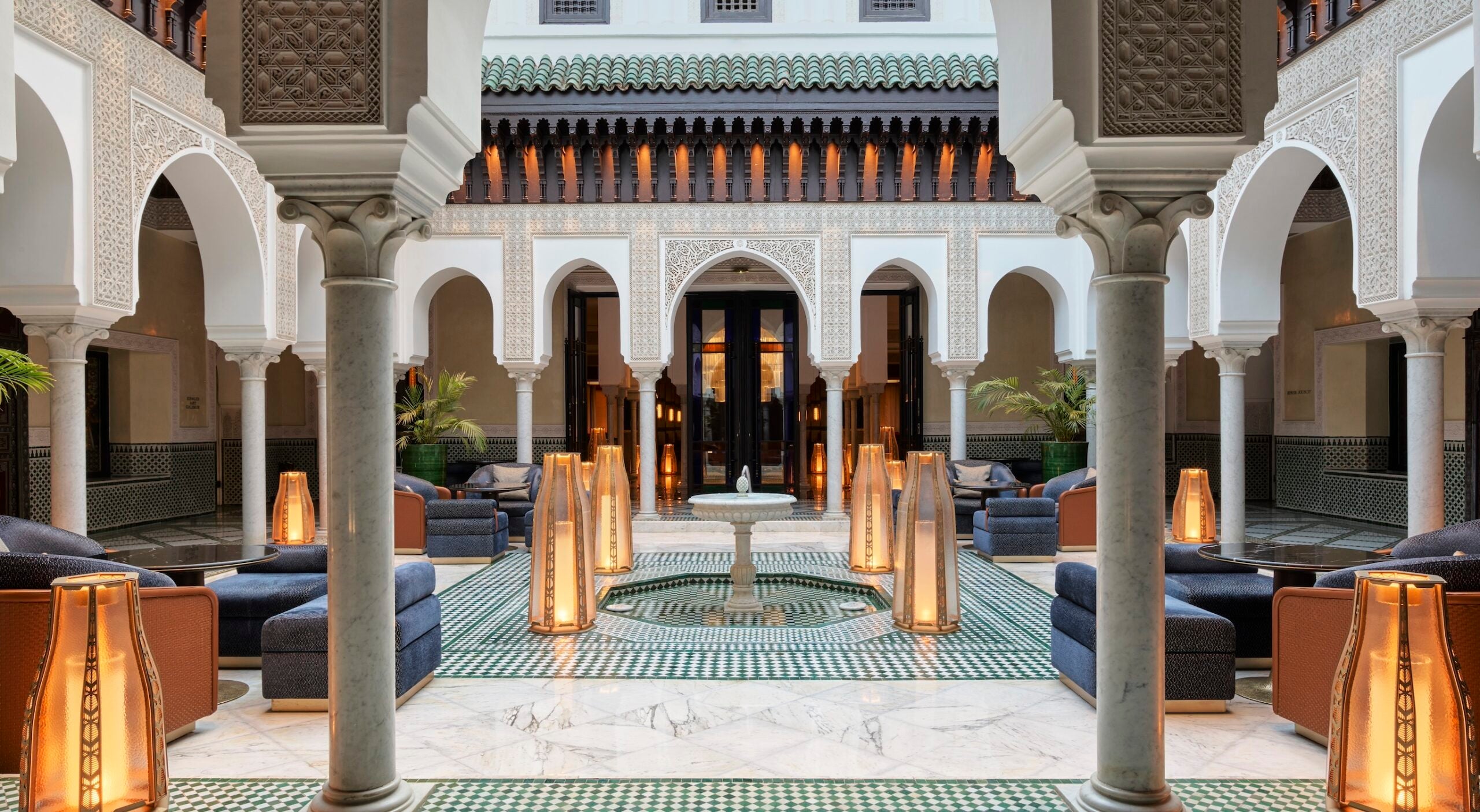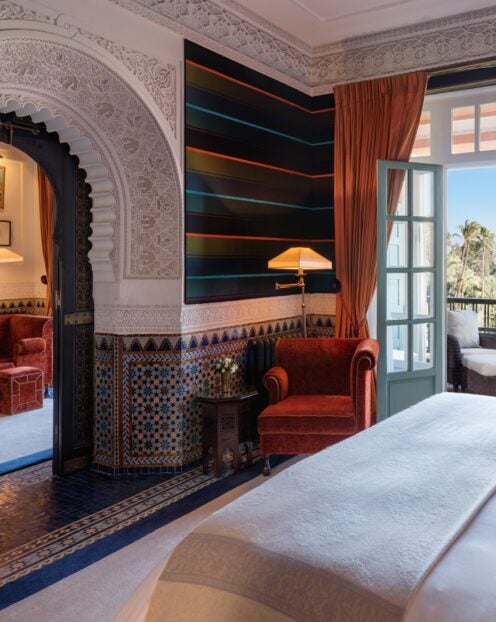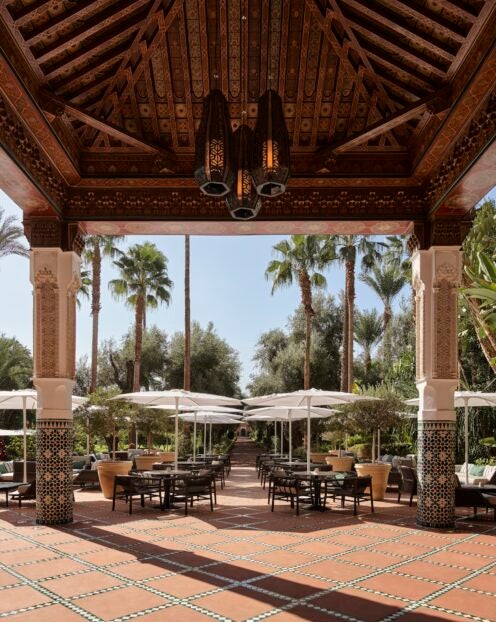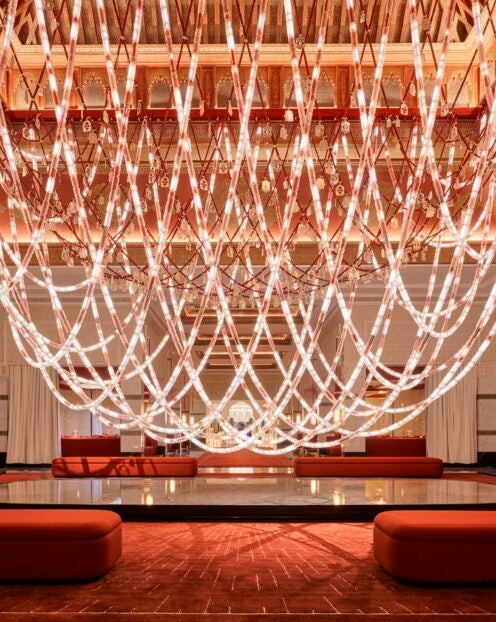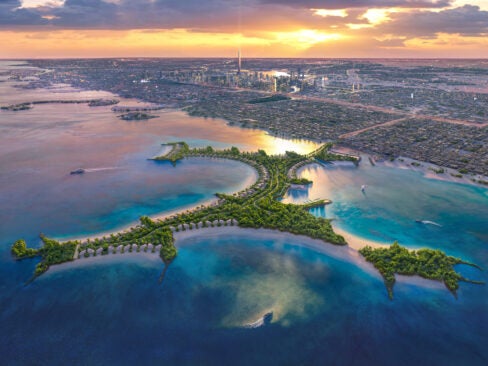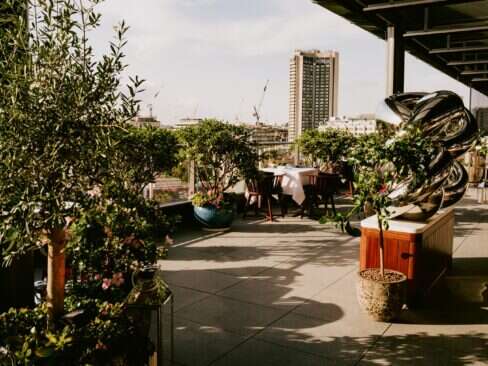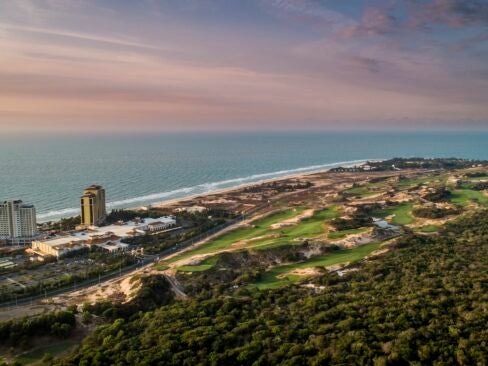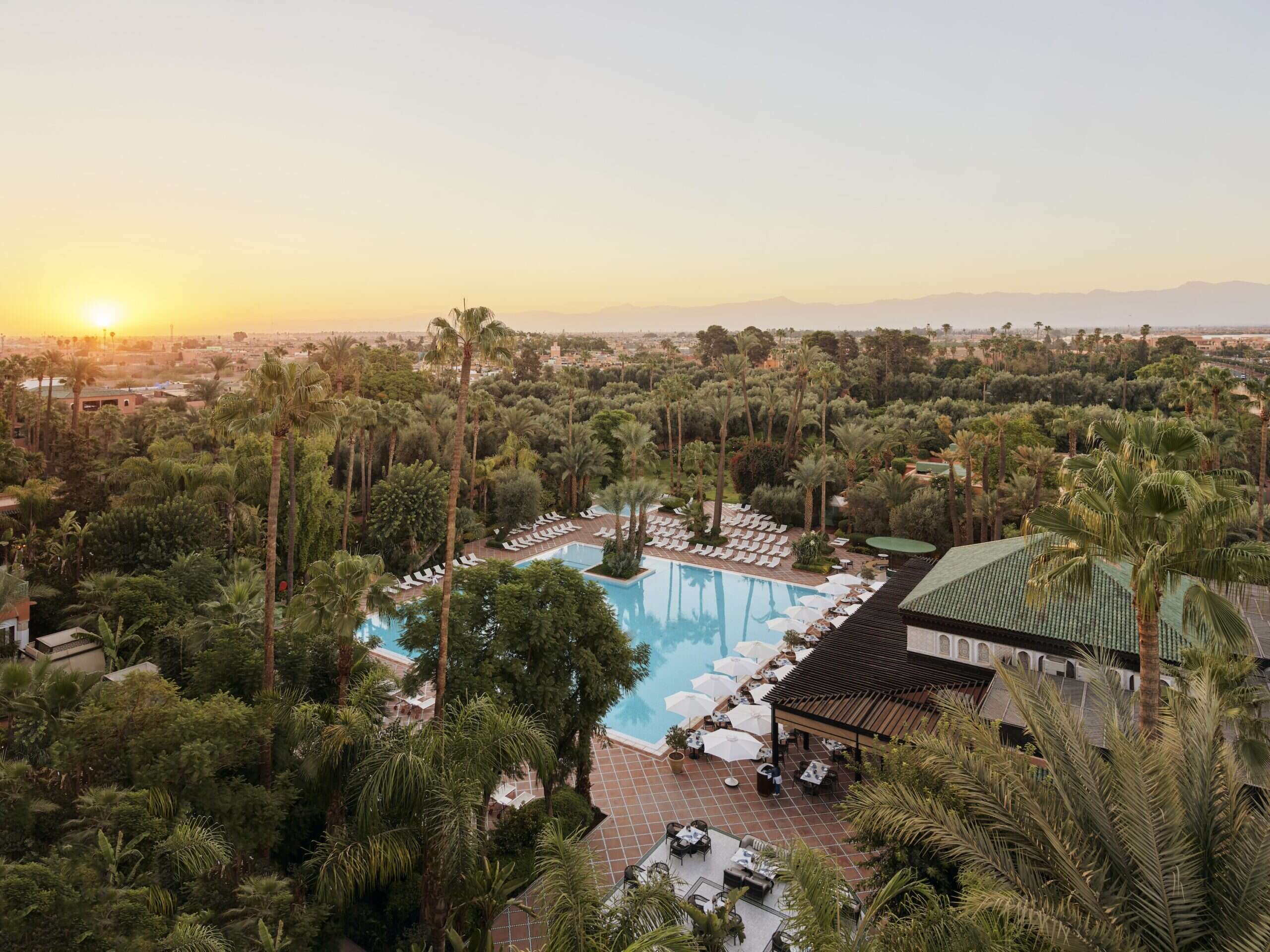
A solitary puff of a cotton ball cloud floats aimlessly through a mystical light that’s lured artists like lemmings for centuries. Simmering birdsong is the only sound as the sun begins its shadow dance around a seemingly endless and spectacularly lush tropical garden disappearing away into distant snow-capped mountains. For the winter-weary traveller taking their first steps out onto an already warmed terrace at Marrakech’s legendary La Mamounia hotel, this enrapturing panorama is like being delivered into the promised land.
Originally a present from the Moroccan sultan to his son, Prince Mamoun, in the 18th century, the 20-acre garden not only lends its name to the hotel, but it lies at the heart of its fabled identity. La Mamounia, Morocco’s grande dame, celebrated its centenary in 2023, having played host to a roll call of celebrities that’s as illustrious as it is long. From presidents Clinton and Mandela to royals like Prince (now King) Charles, and reams of Hollywood A-listers, including Hitchcock, who filmed The Man Who Knew Too Much at the property with James Stewart and Doris Day, the stars of the day have succumbed in droves to La Mamounia’s own star quality.
Winston Churchill had a particular affinity, often retreating to the hotel in winter to paint. In 1943 he took his friend Roosevelt there, after portraying La Mamounia to the US President as “the loveliest place in the world”. La Mamounia, still busily buzzing away, White Lotus-like, in February 2025, confirms Churchill as the man who knew what he was talking about.
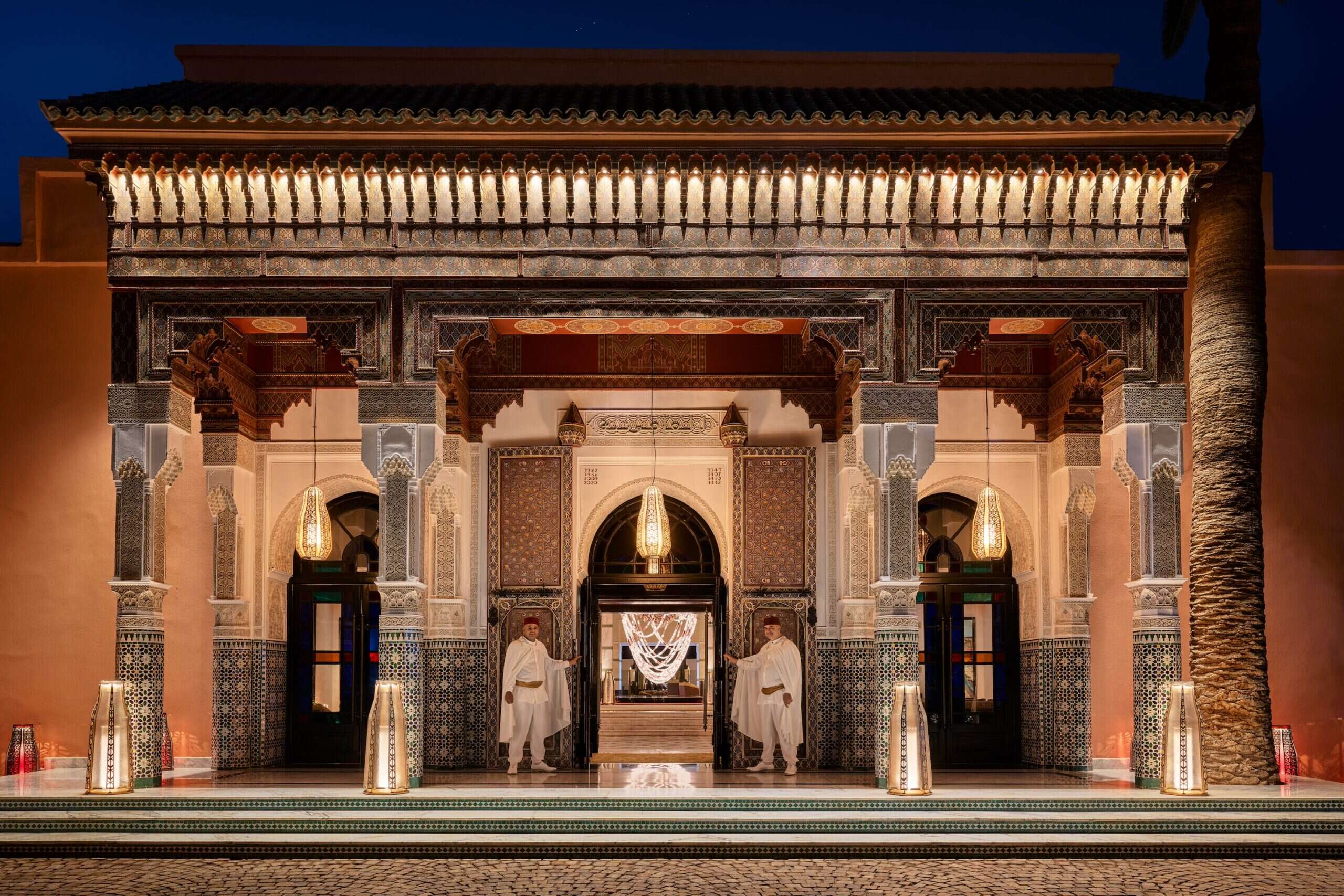
Stay
Enveloped in a reverential hush amidst shadowed enclaves suddenly opening into spectacular light-filled spaces, La Mamounia offers 206 rooms and suites. There are also three riads affording head-of-state-level security, private pools and 24-hour butler service. Anyone familiar with the Netflix series Inventing Anna will recall the riad that serial fraudster Anna Delvey (real name Sorokin) checked into after being inspired by Khloé Kardashian’s social media shots around La Mamounia’s pool. Delvey’s visceral aversion to settling bills at La Mamounia signalled the beginning of her demise.
A massive, mesmerizing luminescent sculpture representing a Berber necklace, dramatically suspended at a confluence of cavernous corridors, is the first of several wow factors to dazzle incoming guests. The work of architectural design studio Jouin Manku is part of a 2020 remodelling of the public spaces, with additional work completed for the centenary.
Highly revered purveyors of a sleek, sensual modernism, principals Patrick Jouin and Sanjit Manku borrowed from Lampedusa’s The Leopard for their credo to restyle La Mamounia: “Everything must change so that everything can stay the same.” A stunning and subtly sophisticated melange of traditional elegance with contemporary cool is duly delivered.
The accommodations were remodelled by Jacques Garcia, a doyen of period property designers, in 2009, and his style template with zellige tilework and exquisite Moroccan craftsmanship still looks fabulous. Pierre Jochem, Mamounia’s legendary general manager, with a back catalogue of legendary hotels including Raffles in Singapore and New Delhi’s Imperial, hints at a remodelling for the rooms. Garcia’s enchanting Arabist fantasy, however, can probably sit out the onslaught of the high-tech toilets for a while yet.
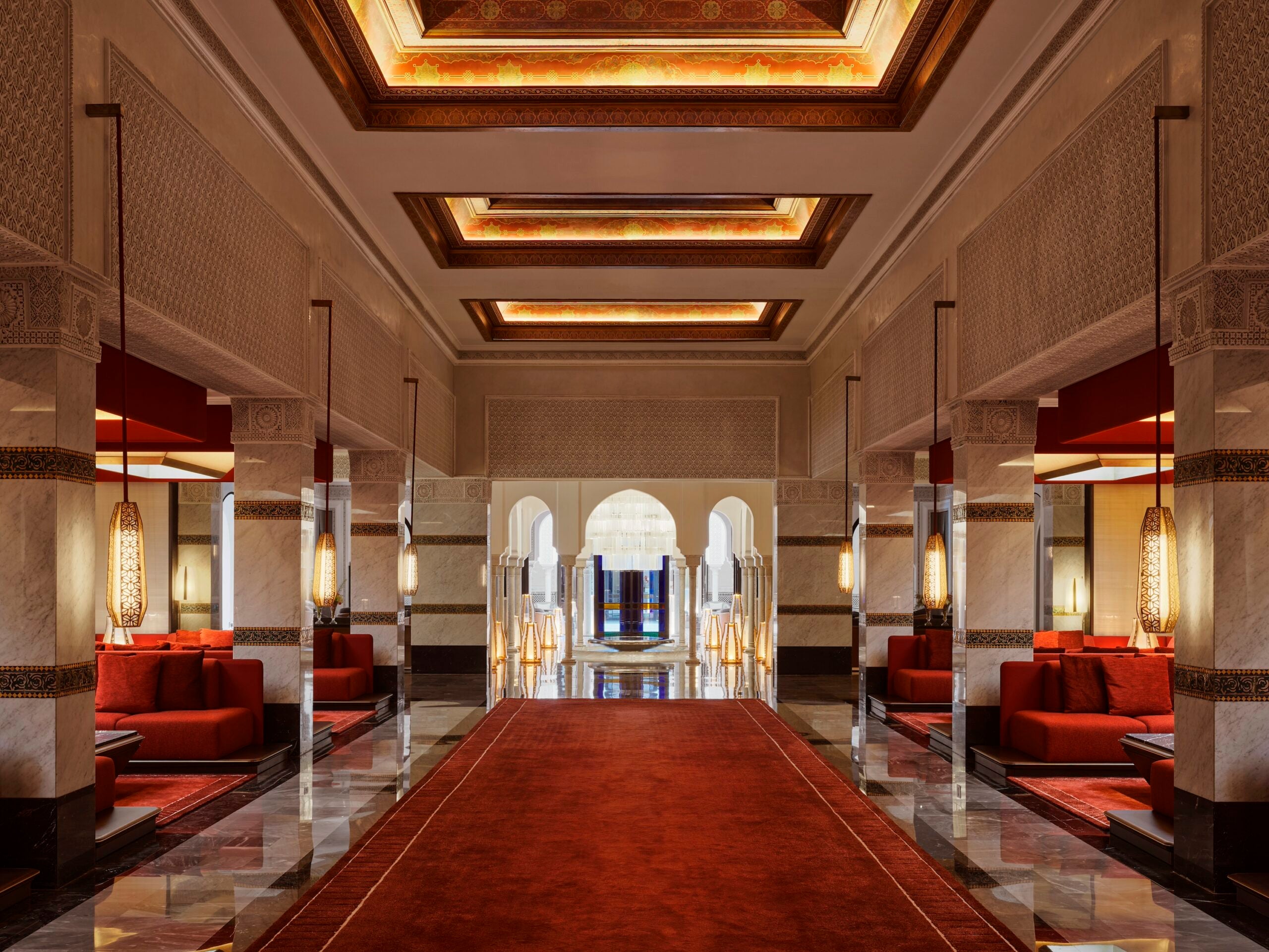

Dine
Two redesigned restaurants, the pan-Asian L’Asiatique and L’Italien, are overseen by Jean-Georges Vongerichten, whose New York mothership, Jean-Georges, boasts four New York Times stars and two Michelin ones, and sits at the heart of a global gastronomic empire comprising 60 restaurants. At the 2020 opening of L’Italien, I asked Jean-Georges how he manages to keep a handle on everything, eliciting a shrug response. But with a recent dinner at L’Asiatique, proving every bit as delicious as five years previously, clearly, he does manage to keep a handle on everything.
In the gardens is the flagship Moroccan restaurant, Le Marocain, housed in an atmospheric riad with traditional musicians and a rooftop bar. Also in the gardens is Le Menzeh, a salon de thé from Pierre Hermé, one of France’s master-pâtissiers. He has another one inside the hotel, along with a boutique where his famous original creations pose a clear and present danger to the unwary sweet-toothed.
The elegantly remodelled pool pavilion, with its burbling blue ceramic fountain, houses the expansive breakfast buffet that’s served into the morning hubbub of sun-dappled seating alongside the spectacular pool. Hotel breakfast scenarios are rarely as alluring. Maybe that was the Khloé Kardashian image that motivated Anna Delvey – almost worth paying for.
The Majorelle bar, named in honour of artist and Marrakech resident Jacques Majorelle, whose garden remains a principal tourist draw, occupies a substantial, glamour-infused space in the heart of the hotel. The Churchill Bar, meanwhile, named after the property’s other principal celebrity, has been exquisitely reconfigured into a smaller convivial space channelling a Pullman railway carriage, in reference to the Moroccan Railway Company that originally constructed the hotel. It now leads into a plush new cinema in a nod to La Mamounia’s cinematographic connections, where, during the Marrakech International Film Festival, the hotel is flooded with the film world’s big hitters.
Relax
La Mamounia sits on a very busy road, but once ushered past the elaborately attired doormen, it’s like entering a parallel universe; a sprawling holy of holies of hospitality enveloped in slo-mo opulence that is at once inherently relaxing. For those intent on dialling down further into abject lethargy, the 27,000 sq ft spa area at La Mamounia is a labyrinthine world within a world dedicated to cleansing, purifying and beautifying. Few countries embrace the steam-infused rejuvenation rituals of the hammam as enthusiastically as Morocco, where they’ve remained an integral element of the country’s culture for centuries.
Jacques Garcia’s traditionally inspired redesign of the spa, with its Ali-Baba doorways and mysterious maze of corridors covered in Zellige tilework, boasts a Sultan-sized indoor pool, 10 treatment rooms and three hammams. A spa menu proffering over 80 face and body treatments, together with hairdressing and manicuring services, ensures La Mamounia’s spa is one of the very best in a city already renowned for its hammams and spas.
The swimming pool, occupying an idyllic location surrounded by towering palms and pristine pruned shrubbery, is as beautiful a hotel pool as to be found anywhere. Lined in Murano glass and near proportionally perfect at 82 ft by 85 ft, it’s heated to 82 degrees, which, for those of us who use pools for exercise, is a little warm, though a small price to pay for such aquatic finesse. The sun loungers are all neatly arranged, the attentive staff have fluffy white towels at the ready, and a lunch table at the pavilion, around 20 to 30 leisurely steps away. Relaxing? Yes, I would probably say so.
Inside La Mamounia
Explore
A century after Prince Mamoun’s garden was incorporated into a new luxury hotel, La Mamounia finds itself encircled by the competition. First mover advantage, though, allows it to offer something that other occupants of the ultra-luxe space might struggle with. Its unrivalled location enables guests to walk straight out of the door and – providing they don’t get mown down crossing that road – within 10 minutes be in front of the incredible 12th century Koutoubia Mosque, watching the acrobats, snake charmers and magicians in the world-renowned and intensely Instagrammed Jemaa el-Fnaa square. In the race for space, La Mamounia has always occupied pole position.
Marrakech, with its mad melee of bustling souks and its long-held fascination for artists, creatives and fashionistas, is a hive of frenetic activity. Whilst nowadays, those sensitive to over-tourism may need to plan their time there with a degree of circumspection, the city remains a repository of wonderful impromptu experiences and sensory delights.
For those in search of something more tranquil, La Mamounia’s concierges can curate personalised trips to the nearby Atlas Mountains, longer excursions into the Agafay desert, and even further to the sandy perimeters of the Sahara, where a helicopter can also supplant the 13-hour road trip.
Or simply remain ensconced inside the fortress-like walls of La Mamounia, as Churchill liked to do, exploring the manifold delights of Marrakech’s magnificent grand hotel. Guided, perhaps, by one of the many famous quotes from its most famous guest: “I am easily satisfied with the very best.”
Al Mamoun suite from $8,000 and Riads from $9,000. Click here to book now. Elite Traveler may earn commission if you book through the link.
